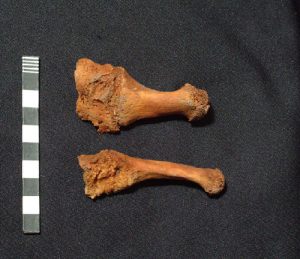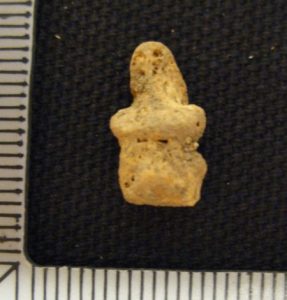Ankylosis is the medical term used to describe an abnormal adhesion and rigidity of the bones in a joint. The potential causes are many, but frequently arise from injury or disease. Initially in ankylosis there is inflammation in the joints affecting the tendons, muscles and the membranes lining the surfaces of the bones. This is often associated with swelling and pain. The consequence of this is that the bones do not move easily and so they tend to become fixed in one particular position, which may be the one which causes least pain. However, this immobility can then lead to the bones fusing together. When this has happened no movement is possible in the joint, although surgical intervention can sometimes re-establish movement, such as with an elbow or shoulder. There are several different types of ankyloses. One of the common forms arises when the person has an inflammatory disease, such as rheumatoid arthritis which most often affects the fingers and wrist. During the archaeological dig in the former East Kirk a number of examples of ankylosis were found among the human remains, but they were affecting the feet.

The accompanying photographs show two examples of the completely fused bones in the foot which were found. The first one shows two metatarsals (the long bone in the mid-foo, to the rightt) fused to tarsal bones (in the ankle, to the left), whilst the second photograph shows a toe.

There is a tendency to imagine that this type of disease is ‘modern’ and confined to humans. The examples shown were of individuals who lived several hundred years ago. However, paleopathologists have found evidence of ankylosis in the fossil record, including one example of the famous dinosaur Tyrannosaurus rex!
(The photographs are copyright Aberdeen Art Gallery & Museums Collections and are used with permission).